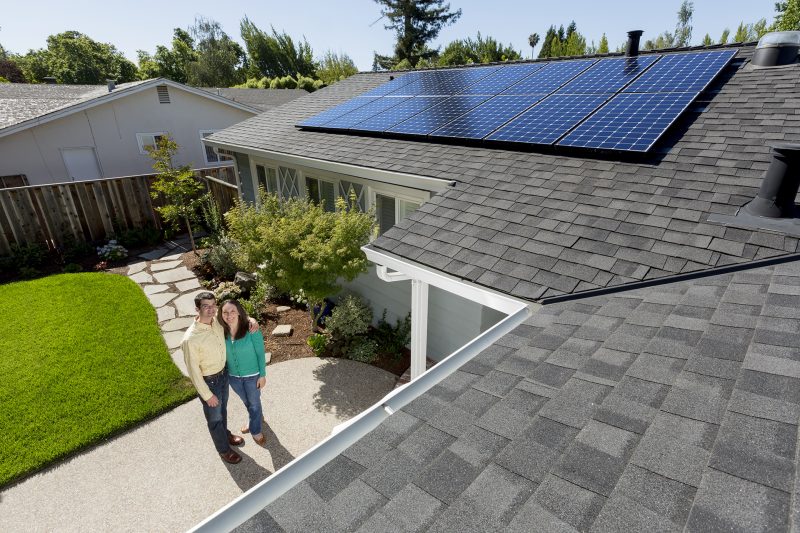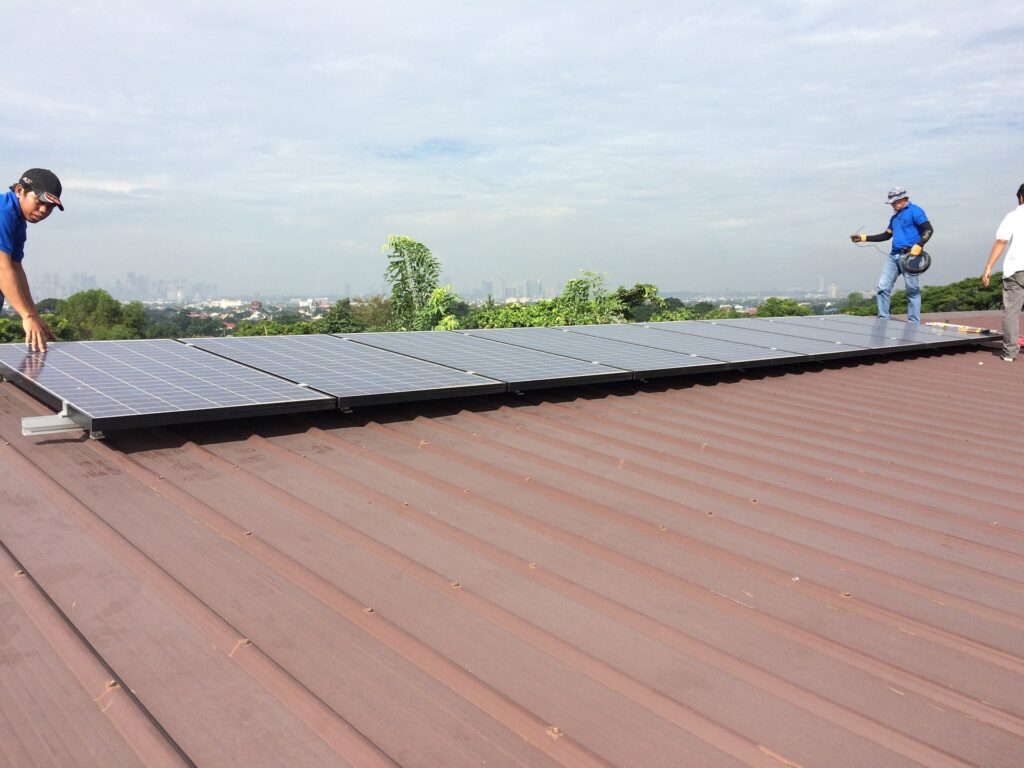Out of the hundreds of potential customers that you talk to, what percentage end up actually buying a residential solar installation? Chances are that only a fraction of the homeowners your sales team talks to about residential solar will end up committing to an installation. Converting leads to sales is one of the biggest challenges that nearly every company in the industry faces.
Thankfully, there are a number of ways your company can help nudge potential customers towards committing to solar–and they all start with understanding how people decide whether to buy. Today, we’re covering some of the key factors that go into a homeowner’s decision to buy solar and how the ability to quickly generate a proposal and centralize information can help you boost your win rate.
What Tips the Scales Towards Solar?
Ultimately, the reason why someone purchases solar–or decides not to–come down to the individual and their own personal motivations. But there are plenty of lessons to be learned from surveys of homeowners about why they do or don’t want to install solar panels on their home. Prepare your sales team to address these points in their conversations with prospects and boost your win rate.
1. Understanding Options and Pricing
Even though it’s widely known that prices for PV installations have come down dramatically in recent years, most residential solar customers are still wary. Many homeowners struggle with a lack of familiarity with solar energy systems and are confused by different options and pricing levels. When they have trouble figuring out what to buy and how much a solar installation will cost the savings numbers aren’t as clear. As a result, they’d rather sit on the sidelines and stick with their current utility provider than invest in a solar installation.
On the other hand, a survey of homeowners who did make the switch to solar found that 41% of them committed to the installation because of the long-term savings from covering their energy needs without the utility company. So, the financials are critical.
Clearly, there’s a disconnect with homeowners between the up-front cost of solar and how quickly a solar installation can pay for itself. Addressing that disconnect will play a major role in how you are able to convert leads.

2. Addressing Aesthetics
The aesthetics of how solar panels will look on a home’s roof can be a major decision factor in whether homeowners go ahead with a solar installation. For some buyers, the appearance of solar panels on the home is one of the top decision factors. Other homeowners have concerns that the cost savings of installing solar panels will be offset by a decrease in the value of their home, should the panels look out of place.
That said, most installers we work with take pride in the professional and attractive appearance of their installations. Most choose to feature photos and videos of their best and most recent work on their website and social media channels. This can go a long way in helping a homeowner visualize what panels might look like on their own roof and giving them the confidence to buy knowing that installations can look great.
3. Overcoming a Lack of Confidence
Another major barrier to buying is that many homeowners simply lack confidence in the installers they’ve spoken with or heard about. While solar is growing in popularity, many people still don’t know anyone personally who has had an experience with an installer. Often people are anxious given their past experiences with contractors.
Allaying these fears from your first contact will go a long way towards putting homeowners at ease and make them more willing to trust your company with a solar installation.
Boost Your Win Rate
Now that you know what some of the factors are that can block a residential solar sale, what can you and your team do to increase your company’s win rate?
1. Focus on the Three-Day Window
Timing, as they say, is everything. From the first point of contact, the majority of homeowners will come to a final decision about whether or not to proceed on a solar installation within three days. That means your company has a tremendous potential to increase your conversion rate by following-up within those three days.
Respond to leads as fast as possible–the best practice in many industries is to call someone back within five minutes of getting an inquiry. Ask your sales team to reconnect with potential clients within 24 hours of a site visit to follow through on proposals or answering any remaining questions from the initial visit. In the age of mobile devices, fast turnarounds are becoming the norm even for smaller companies. When a homeowner may be getting quotes from three different companies, you want to show you’re responsive.
It’s best to recognize unlikely deals early and focus your sales team’s time on business that has a better chance of closing.
If a prospect doesn’t move forward within this critical timeframe, that’s not necessarily a bad thing. Don’t be afraid to deprioritize opportunities that are stalling. It’s best to recognize unlikely deals early and focus your sales team’s time on business that has a better chance of closing.
Find ways to stay top of mind with prospects who aren’t buying now. The issue may just be timing, and they may revisit their decision again next year, in which case you want them to remember you. If your marketing team puts out regular newsletters or is active on social media accounts, try and get these prospects to follow you even if they’re not ready to buy now; this is a great way to stay in touch.
2. Present Competitive Pricing Options
Since cost remains a major sticking point for consumers, it’s important to be competitive in your pricing. That doesn’t mean cutting into your margin, but rather finding ways to reduce installation soft costs (e.g. labor time and administrative costs) and working with the customer to give them options in their price range.
You’ll also need to do your modelling to demonstrate the value proposition of solar panels to homeowners. As we learned, homeowners may have heard that, generally speaking, solar can reduce electricity costs, but they don’t know if the cost reduction will be enough in their home to make solar worthwhile. Meet with your prospect prepared to offer hard facts on how much money they can expect to save on their electric bill year-over-year and help walk them through the rebates and financing options that are available to them.
While it may seem counter-intuitive, encourage them to get additional quotes. If your pricing is competitive, this won’t hurt your business, and consumers that talk to multiple solar companies are more likely to eventually commit to a solar installation.
Along with offering competitive pricing, your company needs to be able to work with homeowners to offer them a variety of options. While some homeowners may be solely worried about the price of an installation and want to cut costs at every corner, many are willing to pay a premium to get the look they want for their installation. By understanding what’s important to that individual homeowner and offering options, you increase the chances they’ll commit to solar and end up with an installation they’re excited to recommend to others.

3. Instill Confidence
After price, the most important thing your company can do to stand out to potential customers is to instill in them trust and confidence in you. Informed customers are going to have a lot of questions for your sales reps and answering them quickly and accurately will show you are knowledgeable and professional.
Sharing testimonials may be one of the most powerful ways to instill confidence in your prospects. Hand them real-life examples of dollar savings your existing customers have achieved. Ask your best and happiest customers if they will serve as references that your prospects can call up. You don’t want to abuse this favor, but some homeowners are only too happy to gush about their solar experience.
Likewise, it’s important that everyone on your team should be on the same page. Your sales reps should be able to answer questions that get at the details of the installation, and your installation team should be able to go to the sales team to answer questions rather than returning to the clients to re-ask the same questions. This is where having a team-centric app that allows everyone in your company to communicate quickly about a potential deal can make a huge difference.
Today’s Bottom Line
Increasing your company’s conversion rate from leads to sales is a huge driver in growing your business. Boosting your win rate relies on everyone on your team recognizing the sticking points that prevent homeowners from committing to solar and addressing them. By reducing your soft costs to make your pricing more competitive, providing options to address a wider variety of homeowner concerns, instilling confidence in your company throughout the sales and installation process, and focusing sales efforts on the critical window in which homeowners make their decisions, your company can dramatically increase the number of potential customers that become your clients.
Related: 10 Easy Tips to Try for Your Next Solar Panel Installation


